The allure of Ancient Egypt has captivated people for centuries, with its monumental pyramids, enigmatic mummies, and intricate hieroglyphs. However, much of what we think we know is shrouded in myths and misconceptions. Distinguishing myths from facts is essential to appreciate the true richness of this ancient civilization. Understanding the myths and facts about Ancient Egypt not only enriches our historical knowledge but also enhances our travel experiences to this fascinating country.
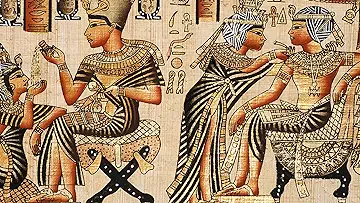
Common Myths and Facts About Ancient Egypt
Myth 1: The Curse of the Pharaohs
The myth of the Curse of the Pharaohs suggests that those who disturb the tombs of Ancient Egyptian pharaohs will face dire consequences. This legend gained traction after the discovery of King Tutankhamun’s tomb in 1922, when several individuals involved in the excavation died under mysterious circumstances. However, the myth has been debunked by historians who attribute these deaths to natural causes or infections. Numerous archaeologists who spent years working in Egyptian tombs lived long, healthy lives, proving that the curse is more a product of sensational journalism than ancient reality. This myth is one of the most popular myths and facts about Ancient Egypt.
Myth 2: Aliens Built the Pyramids
The idea that aliens built the pyramids has gained popularity in modern culture, fueled by the extraordinary precision and scale of these structures. However, there is no scientific or historical evidence to support this claim. Archaeological findings reveal that the pyramids were constructed by skilled laborers using advanced engineering techniques for their time. The alignment with celestial bodies, precise measurements, and organization of a large workforce highlight the Egyptians’ remarkable ingenuity rather than extraterrestrial intervention. This notion is one of the most debated myths and facts about Ancient Egypt.
Myth 3: Cleopatra Was Egyptian
Contrary to popular belief, Cleopatra VII, one of the most iconic figures associated with Ancient Egypt, was not ethnically Egyptian. She was of Greek descent, belonging to the Ptolemaic dynasty that ruled Egypt after Alexander the Great’s conquest. Cleopatra was the last active ruler of this dynasty and is renowned for her intelligence, political acumen, and romantic liaisons with Julius Caesar and Mark Antony. Her reign marked the end of the Hellenistic Era and the beginning of Roman dominance in Egypt. This misconception is a key point in understanding the myths and facts about Ancient Egypt.
Myth 4: Slaves Built the Pyramids
A common misconception is that the pyramids were built by slaves. However, evidence suggests that the workforce consisted of skilled laborers who were well-fed and housed in nearby workers’ villages. These workers were paid for their labor and took pride in their work, as indicated by graffiti found at the construction sites. Archaeological findings, such as workers’ tombs and records, provide insights into the lives of these laborers, debunking the notion that slaves built these monumental structures. This is a crucial aspect when exploring the myths and facts about Ancient Egypt.
Myth 5: All Egyptians Were Mummified
While mummification is closely associated with Ancient Egypt, it was a practice reserved for the elite and those who could afford it. Most of the general population was buried in simple graves, with the body wrapped in a shroud. Mummification involved a complex and expensive process of preserving the body for the afterlife, which included removing internal organs, treating the body with natron, and wrapping it in linen. Only pharaohs, nobles, and wealthy individuals underwent this elaborate procedure. This practice highlights an important distinction in the myths and facts about Ancient Egypt.
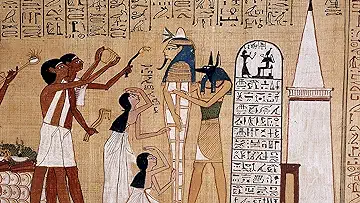
Fascinating Facts About Ancient Egypt
Fact 1: The Great Pyramid’s Precision
The Great Pyramid of Giza, one of the Seven Wonders of the Ancient World, is an architectural marvel. Its precision in alignment with the cardinal points and its dimensions reflect advanced knowledge of geometry and astronomy. The pyramid’s base is almost perfectly square, and its sides are aligned with the four cardinal directions. This precision indicates a sophisticated understanding of mathematics and engineering that continues to astonish researchers today. Such engineering feats are crucial to understanding the myths and facts about Ancient Egypt.
Fact 2: The Complexity of Hieroglyphics
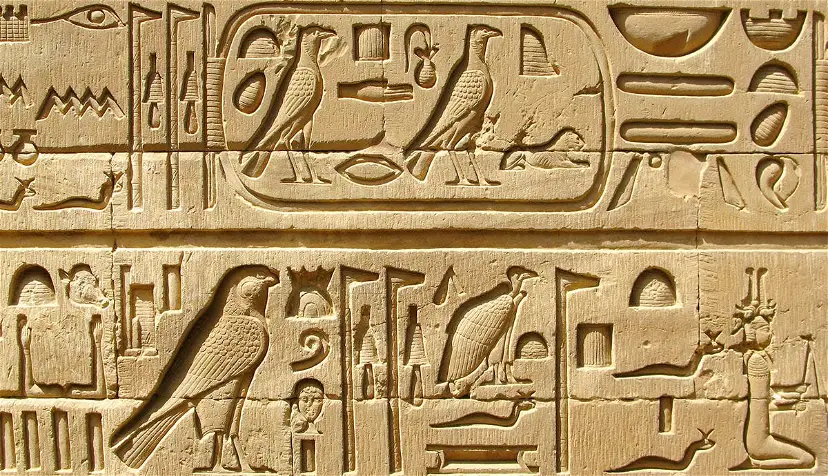
Hieroglyphics, the writing system of Ancient Egypt, is one of the most complex and intriguing scripts in history. It consists of logographic and alphabetic elements and was used for religious texts, monumental inscriptions, and administrative documents. The Rosetta Stone, discovered in 1799, was crucial in deciphering hieroglyphics. It contains the same text in Greek, Demotic, and hieroglyphic script, allowing scholars to unlock the meaning of this ancient writing system. This complexity adds depth to the myths and facts about Ancient Egypt.
Fact 3: Advanced Medical Practices
Ancient Egyptians were pioneers in medical practices, with knowledge that contributed significantly to modern medicine. They performed surgeries, set broken bones, and used various medicinal plants to treat ailments. Medical papyri, such as the Ebers Papyrus and the Edwin Smith Papyrus, reveal their understanding of anatomy, pharmacology, and surgical techniques. Their practices, including the use of honey for wound care and willow bark for pain relief, laid the foundation for contemporary medical treatments. These advancements are vital to the myths and facts about Ancient Egypt.
| Name | Date of copy | Date found | Place found | Location | Content | Ref. |
|---|---|---|---|---|---|---|
| Kahun papyrus | 1825BCE | 1889 | Kahun, near the Fayoum oasis | London, UK | Gynecological diseases | (Griffith and Petrie, 1898, Leake, 1952) |
| Edwin Smith papyrus | 1600BCE | 1862 | Thebes | New York, USA | Medicinal encyclopedia and pharmacopeia | (Stiefel et al., 2006) |
| Ebers papyrus | 1550BCE | 1873 | Thebes | Leipzig, Germany | Ophthalmology, GIT, head, the skin, and urinary tract | (Bryan, 1930) |
| Hearst papyrus | 1550BCE | Published in 1912 | Deir el-Ballas, south Dendera | Berkeley | Practitioner’s recipe book | (Reisner, 1905a) |
| Erman papyrus | 1550BCE | 1886 | Thebes | Berlin, Germany | Childbirth and infants care | (Leake, 1952) |
| London papyrus | 1300BCE | 1860 | Thebes | London, UK | 61 recipes, 25 of which are medical and 36 are magical | (Nunn, 2002) |
| Berlin papyrus | 1350BCE | Published in 1909 | Saqqara | Berlin, Germany | Childbirth and infants, heart description and vessels anatomy | (Leake, 1952, Willerson and Teaff, 1996) |
| Chester Beatty papyrus | 1200BCE | 1928 | Deir el-Medina (Western Thebes) | London, UK | Formulary for anal diseases | (Reeves, 1992) |
Fact 4: Women’s Rights in Ancient Egypt
Women in Ancient Egypt enjoyed more rights and social status compared to their counterparts in other ancient civilizations. They could own property, engage in business, and initiate divorce. Notable female figures include Hatshepsut, one of the few female pharaohs, and Cleopatra VII. Women also held significant religious roles, such as priestesses of various deities, reflecting a society that valued their contributions in both the public and private spheres. This societal structure is a key element in the myths and facts about Ancient Egypt.
Fact 5: The Influence of Egyptian Mythology
Egyptian mythology played a central role in the culture, art, and daily life of the civilization. Key gods and goddesses, such as Ra, Isis, Osiris, and Horus, were revered and depicted in temples, tombs, and artifacts. Mythological stories explained natural phenomena, moral lessons, and the afterlife. The rich pantheon of deities and their associated rituals influenced not only religious practices but also the artistic and architectural achievements of Ancient Egypt. This influence is fundamental to the myths and facts about Ancient Egypt.
Exploring Ancient Egypt Today With TravMe

Visiting the Pyramids of Giza
The Pyramids of Giza are among the most iconic landmarks in the world. To make the most of your visit, consider going early in the morning to avoid the crowds and the midday heat. Guided tours are highly recommended as they provide valuable insights into the history and construction of these magnificent structures. Don’t miss the chance to explore the nearby Sphinx and the Solar Boat Museum, which houses a reconstructed ancient boat used in the pharaoh’s funerary rites. This experience will deepen your understanding of the myths and facts about Ancient Egypt.
The Egyptian Museum in Cairo
The Egyptian Museum in Cairo is a treasure trove of artifacts that span the entirety of Ancient Egyptian history. Must-see exhibits include the treasures of King Tutankhamun, the mummies of famous pharaohs, and the extensive collection of statues and jewelry. The museum plays a crucial role in preserving Egypt’s cultural heritage and offers an unparalleled opportunity to see these priceless relics up close.
Temples and Tombs in Luxor
Luxor, often referred to as the world’s greatest open-air museum, is home to some of the most spectacular temples and tombs in Egypt. Key sites include the Temple of Karnak, the Temple of Luxor, and the Valley of the Kings, where the tomb of Tutankhamun was discovered. Each site offers a glimpse into the grandeur of ancient Egyptian architecture and the religious beliefs of the time. When visiting Luxor, make sure to explore the beautifully preserved tombs and the intricately carved temples. These sites are essential for comprehending the myths and facts about Ancient Egypt.
Cruising the Nile River
A Nile River cruise is one of the best ways to experience the beauty and history of Egypt. These cruises typically stop at major archaeological sites along the river, such as the temples of Edfu and Kom Ombo. The serene journey provides a unique perspective on the landscape that has sustained Egyptian civilization for millennia. The best times to go are between October and April when the weather is cooler and more pleasant for sightseeing. Learn more about planning your Nile cruise. A Nile cruise offers a relaxing way to delve into the myths and facts about Ancient Egypt.
Modern Cairo: Blending Ancient and Modern Worlds
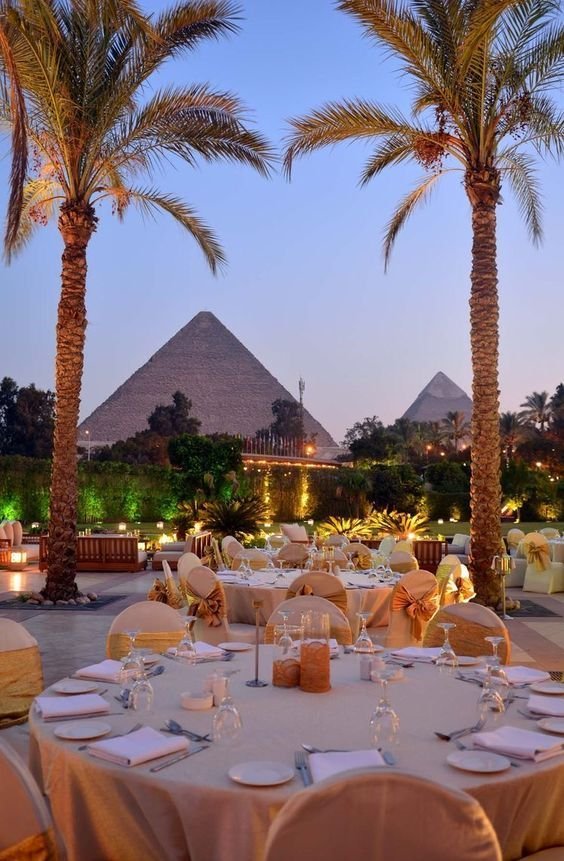
Cairo is a bustling metropolis that seamlessly blends ancient history with modern attractions. Key areas to explore include the historic Islamic Cairo district, with its stunning mosques and bazaars, or Have lunch in a restaurant overlooking the pyramids and the modern neighborhoods like Zamalek and Downtown Cairo, which offer a vibrant mix of restaurants, shops, and cultural venues. Balancing visits to historical sites with experiencing contemporary Egyptian culture provides a well-rounded perspective of the city’s dynamic character. This blend highlights the continuity and change in the myths and facts about Ancient Egypt.
In unraveling the myths and facts about Ancient Egypt, we gain a deeper understanding and appreciation for this remarkable civilization. By distinguishing between legend and reality, we can more fully appreciate the ingenuity, culture, and achievements of the ancient Egyptians. As you explore Egypt, let these insights guide you, enriching your journey and enhancing
your connection to the timeless allure of this ancient land. Whether marveling at the pyramids, deciphering hieroglyphics, or cruising the Nile, the truths behind the myths and facts about Ancient Egypt await your discovery.
Are you ready to explore the wonders of Egypt and uncover the truths behind its ancient myths? Let TravMe be your guide! From comprehensive travel guides and expert tips to curated itineraries, TravMe has everything you need to plan the perfect Egyptian adventure. Visit [TravMe] today and start your journey into the heart of Egypt. Dive deep into the myths and facts about Ancient Egypt, and let us help you create unforgettable memories in one of the most fascinating destinations on earth.
Don’t just visit Egypt—experience it with TravMe!
Plan your next travel adventure and explore our comprehensive packages.
TravMe Business Information:
– Phone: +201008833030
– Fax: +20233765560
– Email: info@travmetours.com
– Address: 5 Zohor St, Hadayek El Ahram, Elite Compound, Remaya Square, Giza, Egypt
Read more:
Best Family holidays in Egypt 2024/ 2025
When is the Best Time to Visit Egypt?


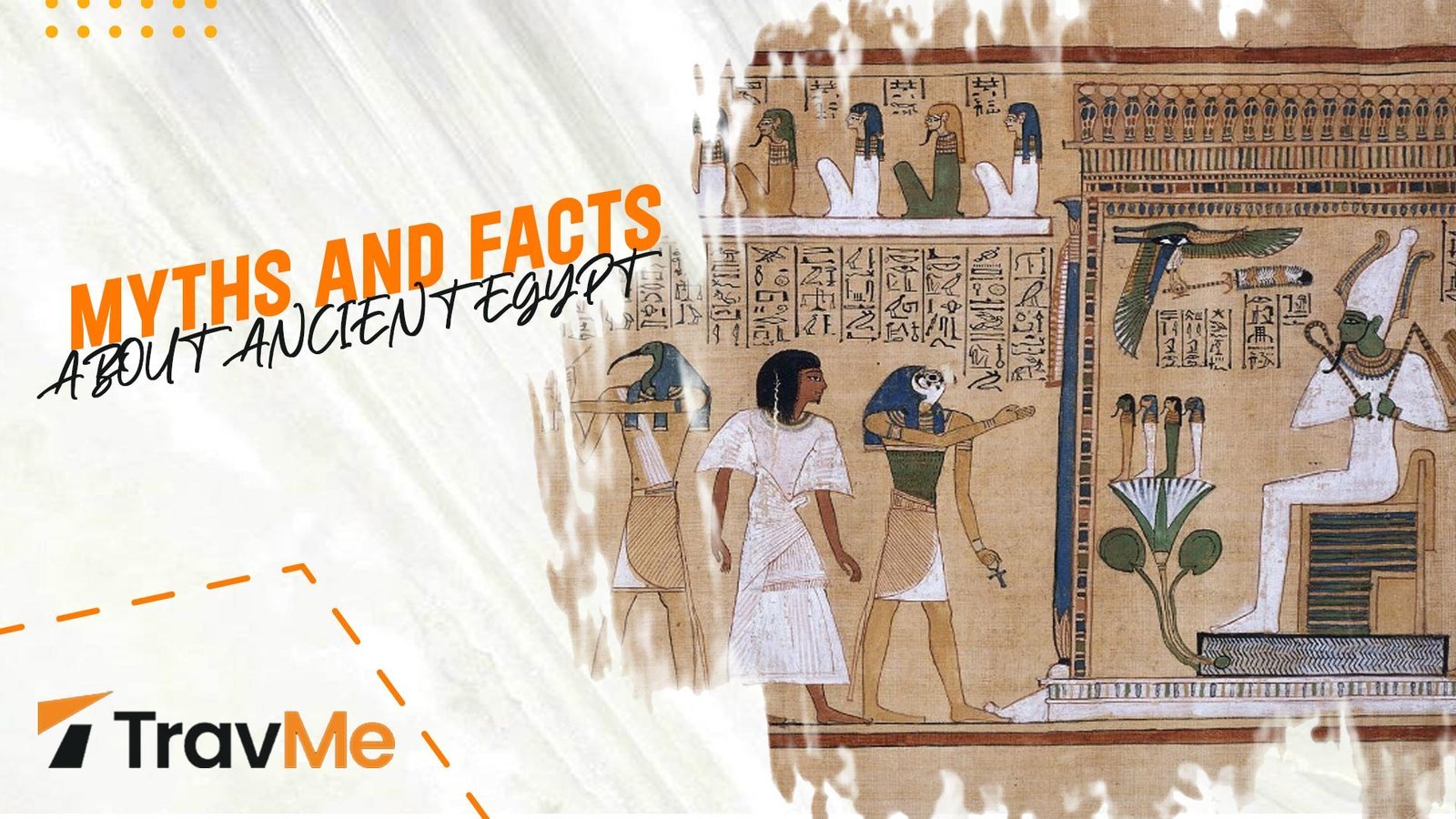
Comment (0)